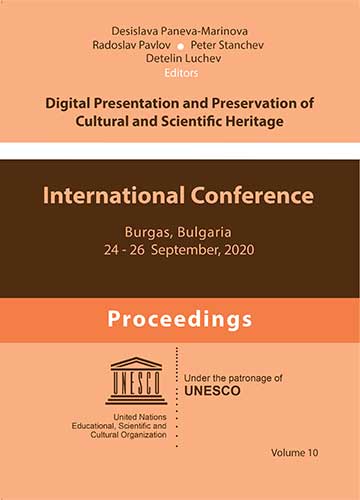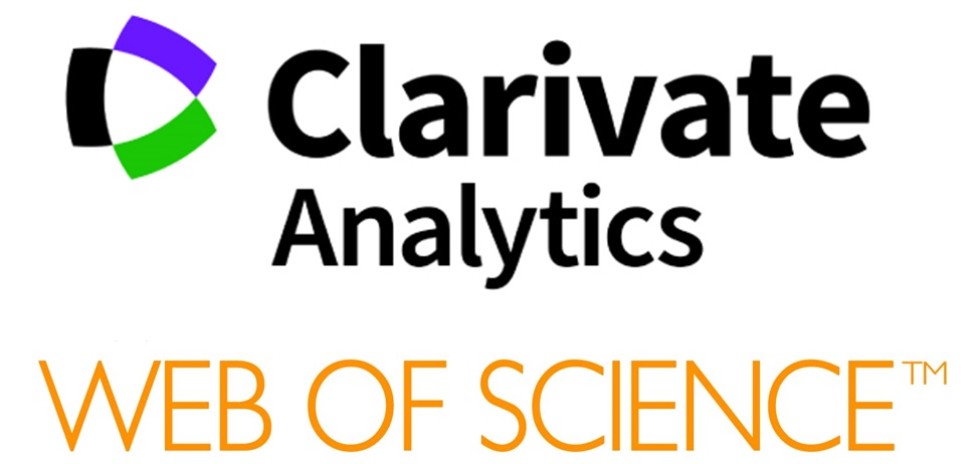Analyzing Knowledge Graph Innovations and Emerging AI technologies for Cultural Heritage Data Management
DOI:
https://doi.org/10.55630/dipp.2025.15.23Keywords:
Knowledge Graphs, Digital Cultural Heritage, Scientific HeritageAbstract
Knowledge graphs have become a vital tool for structuring and accessing cultural heritage data, offering new ways to connect and interpret historical information. As the volume and complexity of heritage data grow, integrating advanced computational methods becomes essential to enhance their accuracy, usability, and accessibility. This paper explores emerging trends in cultural heritage knowledge graphs, focusing on the role of artificial intelligence and machine learning in improving entity recognition, contextualization, and knowledge enrichment. It examines how natural language processing and deep learning techniques can refine data interpretation and automate updates, leading to dynamic, self-sustaining knowledge graphs. Additionally, the study highlights the integration of knowledge graphs with immersive technologies such as augmented reality and virtual reality, which offer interactive ways to engage with heritage content. Finally, it discusses the impact of linked open data initiatives in fostering crossinstitutional collaboration and global accessibility. These advancements collectively redefine how cultural heritage is studied and experienced, making it more interconnected, interactive, and adaptable to new discoveries.References
Akter, M.M., & Rahoman, M. (2023). A Systematic Review on Knowledge Graphs Classification and Their Various Usages. Artificial Intelligence Evolution, 4 (2), 99-233. https://doi.org/10.37256/aie.4220233605
Alexiev, V. (2018). Museum Linked Open Data: Ontologies, Datasets, Projects. Digital Presentation and Preservation of Cultural and Scientific Heritage. 8, 19-50. https://doi.org/10.55630/dipp.2018.8.1
Alexiev, V., Tarkalanov, P., Georgiev, N., & Pavlova, L. (2020). Bulgarian Icons in Wikidata and EDM. Digital Presentation and Preservation of Cultural and Scientific Heritage, 10, 45–64. https://doi.org/10.55630/dipp.2020.10.2
Bobasheva, A., Gandon, F., & Precioso, F. (2022). Learning and Reasoning for Cultural Metadata Quality: Coupling Symbolic AI and Machine Learning over a Semantic Web Knowledge Graph to Support Museum Curators in Improving the Quality of Cultural Metadata and Information Retrieval. Journal on Computing and Cultural Heritage, 15 (3), Article 40, 1-23. https://doi.org/10.1145/3485844
Borissova, V. (2010). Digitizing cultural heritage in Bulgaria: A Survey of Intellectual Property-related Experiences and Practices. World Intellectual Property Organization (WIPO). https://www.wipo.int/export/sites/www/tk/en/docs/resources/borissova_report.pdf
Bruns, O. (2023). The persistence of temporality: Representation of time in cultural heritage knowledge graphs. In C. d’Amato & J. Z. Pan (Eds.) Proceedings of the Doctoral Consortium at ISWC 2023 co-located with 22nd International Semantic Web Conference (ISWC 2023) (CEUR Workshop Proceeding, Vol. 3678). https://iswc2023.semanticweb.org/wp-content/uploads/2023/11/ISWC2023_paper_378.pdf
Carboni, L. (2019). An Ontological Approach to the Description of Visual and Iconographical Representations. Heritage, 2 (2), 1191-1210. https://doi.org/10.3390/heritage2020078
Carriero, V. A., Gangemi, A., Mancinelli, M. L., Marinucci, L., Nuzzolese, A. G., Presutti, V., & Veninata, C. (2019). ArCo: The Italian Cultural Heritage Knowledge Graph. In Ghidini, C., et al. (Eds.), The Semantic Web – ISWC 2019. ISWC 2019. Lecture Notes in Computer Science, vol. 11779 (pp. 36–52). Springer. https://doi.org/10.1007/978-3-030-30796-7_3
Chaudhri, V., Baru, C., Chittar, N., Dong, X., Genesereth, M., Hendler, J., Kalyanpur, A., Lenat, D., Sequeda, J., Vrandečić, D., & Wang, K. (2022). Knowledge graphs: Introduction, history and perspectives. AI Magazune, 43 (1), 17–29. https://doi.org/10.1002/aaai.12033
Cui, Y., Yao S., Wu, J., & Lv, M. (2024). Linking past insights with contemporary understanding: an ontological and knowledge graph approach to the transmission of ancient Chinese classics. Heritage Science, 12, 150. https://doi.org/10.1186/s40494-024-01504-x d'Amato, C., Mahon, L., Monnin, P., & Stamou, G. (2023). Machine Learning and Knowledge Graphs: Existing Gaps and Future Research Challenges. Transactions on Graph Data and Knowledge, 1 (1), 8:1-8:35. https://doi.org/10.4230/TGDK.1.1.8
Devlin, J., Chang, M.-W., Lee, K., & Toutanova, K. (2019). BERT: Pre-training of Deep Bidirectional Transformers for Language Understanding. In Proceedings of the 2019 Conference of the North American Chapter of the Association for Computational Linguistics: Human Language Technologies, Volume 1 (Long and Short Papers) (pp. 4171–4186). Association for Computational Linguistics. https://aclanthology.org/N19-1423.pdf
Fan, T., Wang, H. & Hodel, T. (2023). CICHMKG: a large-scale and comprehensive Chinese intangible cultural heritage multimodal knowledge graph. Heritage Science,, 115. https://doi.org/10.1186/s40494-023-00927-2
Ferilli, S., Bernasconi, E., Di Pierro, D., & Redavid, D. (2025). The GraphBRAIN Framework for Knowledge Graph Management and Its Applications to Cultural Heritage. In: Steffen, B. (Ed.) Bridging the Gap Between AI and Reality. AISoLA 2023. Lecture Notes in Computer Science, vol. 14129 (pp. 144–161). Springer. https://doi.org/10.1007/978-3-031-73741-1_10
Georgiev, V., & Nikolova, A. (2021). Virtual Reality Simulations for Presenting Cultural-historic Content in e-Learning for Kids. Digital Presentation and Preservation of Cultural and Scientific Heritage, 11, 267–272. https://doi.org/10.55630/dipp.2021.11.24
Graphbrain. (2024). Graphbrain – Language, Knowledge, Cognition. https://graphbrain.net/
Hosamo, H., & Mazzetto, S. (2025). Integrating Knowledge Graphs and Digital Twins for Heritage Building Conservation. Buildings, 15 (1), 16. https://doi.org/10.3390/buildings15010016
Huang, Y.Y., Yu, S.S., Chu, J.J., Fan, H.H., & Du, B.B. (2023). Using knowledge graphs and deep learning algorithms to enhance digital cultural heritage management. Heritage Science, 11, 204. https://doi.org/10.1186/s40494-023-01042-y
Kecheva, N. (2018) Archaeоlogical Map of Bulgaria – Transport and Pipeline Infrastructure Projects, Internet Archaeology, 51. https://doi.org/10.11141/ia.51.2
Kecheva, N. (2024) The First Step towards FAIR-ness in Bulgarian Archaeology: the Archaeological Map of Bulgaria in ARIADNE and ARIADNEplus, Internet Archaeology 67. https://doi.org/10.11141/ia.67.5
Li, W., Qi, G., & Qiu, J. (2020). Hybrid reasoning in knowledge graphs: Combining symbolic reasoning and statistical reasoning. Semantic Web Journal, 11 (1), 53–62. https://doi.org/10.3233/SW-190375
Maree, M. (2025). Quantifying Relational Exploration in Cultural Heritage Knowledge Graphs with LLMs: A Neuro-Symbolic Approach. arXiv:2501.06628. https://doi.org/10.48550/arXiv.2501.06628
Mulholland, P., Kranenburg, P. V., Carvalho, J., & Daga, E. (2024). Supporting the end-user curation of cultural heritage knowledge graphs. In Proceedings of the ACM/IEEE Joint Conference on Digital Libraries (JCDL) (pp. 35–44). Association for Computing Machinery. https://doi.org/10.1145/3648188.3675132
Simov, K., & Osenova, P. (2019). Integrated language and knowledge resources for a Bulgarian-centric knowledge graph. Digital Presentation and Preservation of Cultural and Scientific Heritage, 9, 49–58.
Stanković, R.S., Tatić, D., & Luchev, D. (2024). Towards an Integral Solution for Application of Information Technologies in Representation of Medieval Fortresses. Digital Presentation and Preservation of Cultural and Scientific Heritage, 14, 53– 62. https://doi.org/10.55630/dipp.2024.14.4
Tan, M.A. (2024). Knowledge Graph Construction and Refinement for Cultural Heritage Digital Libraries. In K. Taylor & A. Zimmermann (Eds.), Proceedings of the Doctoral Consortium at ISWC 2024 co-located with the 23rd International Semantic Web Conference (ISWC 2024) ( CEUR WP, Vol-3884, pp. 1-8). CEUR Workshop Proceedings. https://ceur-ws.org/Vol-3884/paper7.pdf
Tatić, D., & Stanković, R.S. (2024). Augmented reality software in presentation of cultural and historical heritage. Digital Presentation and Preservation of Cultural and Scientific Heritage, 14, 71–82. https://doi.org/10.55630/dipp.2024.14.6
Todorov, T., & Lutfiu, S. (2023). Intellectual property protection of digital cultural heritage. Digital Presentation and Preservation of Cultural and Scientific Heritage, 13, 263–268. https://doi.org/10.55630/dipp.2023.13.25
Wang, Y., Liu, J., Wang, W., Chen, J., Yang, X., Sang, L., Wen, Z., & Peng, Q. (2024). Construction of Cultural Heritage Knowledge Graph Based on Graph Attention Neural Network. Applied Sciences, 14 (18), 8231. https://doi.org/10.3390/app14188231
Downloads
Published
How to Cite
Issue
Section
License
Copyright (c) 2025 Digital Presentation and Preservation of Cultural and Scientific Heritage

This work is licensed under a Creative Commons Attribution-NonCommercial 4.0 International License.



